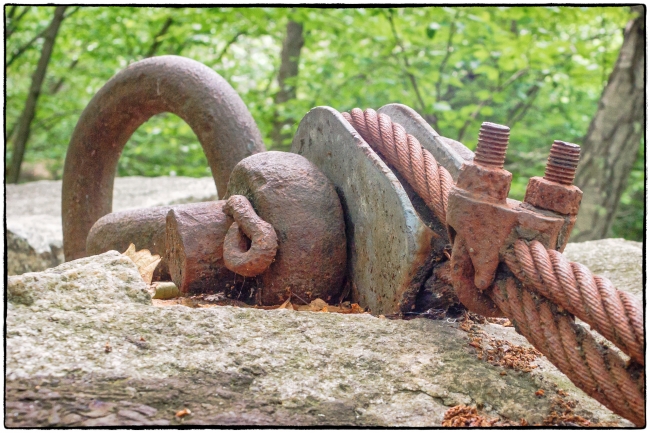I’ve been to Sylvan Glen a few times, most recently in 2014. It’s an interesting place to visit. Rusted metal cables, abandoned pieces of equipment, huge discarded slabs of granite, and an explosive shed are a few of the remains along the trails in Sylvan Glen Park Preserve, the site of a former quarry. Although I’ve never seen them there’s also supposed to be a lime kiln and a cave used by the famous Leatherman who is buried in Sparta Cemetery, Ossining.
According to the web site of the Yorktown Historical Society:
The park is the site of the largest single industry known to the Town of Yorktown. After generous deposits of granite with unusual rich mellow tones of coloration were discovered in the area, quarries were established, probably as early as the 1850’s. It was not until after the turn of the century, however, that the site was exploited to its fullest. The period of greatest activity was from 1900 to 1940. The quarries were operated by various owners – all of whom called their product Mohegan Golden Granite. The last owner, operating the quarries throughout the period of greatest production, was Grenci and Ellis, Inc. Granite from the Mohegan Granite Quarries was used in the construction of the Cathedral of St. John the Divine, the main entrance to the City Bank-Farmer’s Trust Co. building at William Street and Exchange Place (NYC), the New York State Office Building – including the carved Great Seals of the State and City of New York (NYC), the Arlington Memorial Bridge (Washington, D.C.), the Westchester County National Bank (White Plains), the Memorial to (poet) Eugene Field (NYC) and many other buildings, mausoleums and memorials. Barracks and commissaries were built to accommodate the hundreds of laborers attracted to the area. In full production during the ‘20’s, it was not unusual to have two $1,000,000 jobs running at the same time with two hundred men employed for a total weekly payroll of $15,000!

